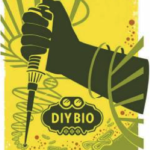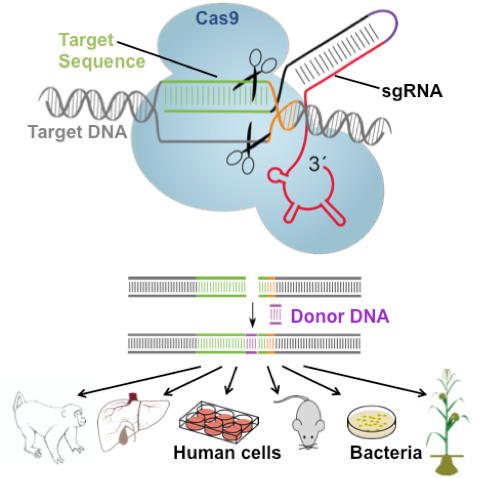- Gene Editing with CRISPR is All the “Buzz”
- Low-Cost CRISPR Kit Being Sold to DIY “Biohackers”
- What is the Balance Between Democratization and Preventing Disaster?
The dictionary definition of democratization is the transition to a more democratic political regime. Since democracy emphasizes the role of individuals in society, democratization is generally perceived to be good. This political concept of democratization is being increasingly morphed, if you will, to describe the transition of science and technology from trained specialists in traditional labs to any individual, anywhere—including someone’s kitchen table.
 Taken from oocities.org
Taken from oocities.org
Lest you get the impression I’m an elitist, and not in favor of fostering better understanding—and appreciation—of science by non-scientists everywhere, I definitely am not. I want the value of science to be widely appreciated. Even if I weren’t of that opinion, democratization of science and technology is already evident in this exemplary cartoon indicating how DNA is now familiar to virtually everyone. But I digress…
 From diy-bio.com
From diy-bio.com
It is evident that molecular biology has also undergone democratization based on emergence of so-called “do it yourself” (DIY) advocates of biology (DIY-BIO), which on the surface seems like a good thing. But, as I’ll expand upon below, DIY-BIO has morphed in a way which has elevated concerns that a well-intentioned DIY aficionado anywhere can now access genetically powerful CRISPR reagents that might inadvertently unleash a harmful home-made organism.
CRISPR Basics
First off, I should note that gene editing by CRISPR—thankfully short for “clustered regularly-interspaced short palindromic repeats”—actually involves another component named Cas9—short for CRISPR associated protein 9. Cas9 is an enzyme that recognizes single guide RNA (sgRNA) hybridized to one strand of specifically targeted DNA via the 5’end of sgRNA, as depicted in green in the mechanism below. The remaining sgRNA has a double-stranded “stem” (black, red) and loop (purple) internal structure, and a 3’ end with several stem-loop structures (red).
 Taken from jeantet.ch
Taken from jeantet.ch
The scissors indicate Cas9 cutting both strands of DNA, which thus allows for insertion of so-called donor DNA and, consequently, enabling a variety of genetic manipulations in plants, bacteria, human or animal cells. Chemically synthesized sgRNA that target any gene of interest can be readily designed for purchase, along with Cas9 in the form of biosynthetic Cas9 mRNA encoding this necessary protein component.
CRISPR’s importance as an emerging, useful tool for gene editing is evident from the number of publications in PubMed that have approximately doubled each year since the seminal to give an estimated 2,500 publications indexed to CRISPR as a search term. Unfortunately (but perhaps not surprisingly given the billion-dollar implications), there is an ongoing dispute over inventorship involving the Broad Institute (see Feng Zhang patent), the University of California, and the University of Vienna.
Biohacker Promotes DIY CRISPR Kit

As mentioned in the introduction, self-proclaimed “biohackers” who are avid fans and practitioners of DIY molecular biology, have been busily “doing their thing” for some time now without much cautionary publicity. That’s changing, however, as a result of the advent of CRISPR together with relatively easy access to its sgRNA and Cas9 reagents. One case in point involves Josiah Zayner, who has a PhD from the Department of Biochemistry and Molecular Biophysics at the University of Chicago and now lives in the San Francisco Bay Area.
Zayner’s online biographical sketch states that he is “very active in Biohacking and DIY Science and run[s>
an online Biohacking supply store The ODIN.” By visiting the website for The ODIN, which reportedly raised $65,000 by crowdfunding online via Indiegogo, you’ll find various items for conducting molecular biology experiments, along with an “about” page stating that “smaller groups of people, small labs or even DIY Scientists on their own can do amazing things if they have access to resources that are normally only available to large heavily funded labs and companies.”
While this seems all fine and good is some ways, the item offered by The ODIN that has led to controversy is the first-ever DIY kit for CRISPR. This, according to an article in The Mercury News, “raises the specter—deeply troubling to some experts—of a day when dangerous gene editing is conducted far from the eyes of government regulators, posing risk to the environment or human health”.
The article goes on to quote one expert who said The ODIN kit is sold for manipulating yeast and could never be used to alter human genes, while another expert cautioned that the kit can teach basic principles to do so with appropriate modifications. Another problem is inadvertent conversion of yeast into a harmful microorganism that might be accidentally spread.

While I share these concerns, it will be virtually impossible to prevent individuals or small groups intent on nefarious activities using CRISPR technology. On the other hand, I have to admit that I would be very concerned if I were living next door or otherwise nearby Josiah if he is indeed practicing what he’s preaching, so to speak, using CRISPR in his kitchen as pictured right.
CRISPRized Plants, Too
If you think that DIY is a passing fad with few devotees, think again. Aside from the main DIY-BIO website that you can peruse, a recent online article in Fusion talks about a couple of DIY enthusiasts doing things that make the hairs on my neck stand up, as the saying goes. For instance, David Ishee, a 30-year-old Mississippi resident who never attended college, does at-home experiments in his shed using online kits for growing plants, but will now use CRISPR to carry out gene editing.
Ishee reportedly will use software like DeskGen that advertises its “on-demand CRISPR libraries” for gene editing, and is quoted as saying “That gives me a lot of new options. Up until now, all the genetic edits I’ve made have been limited to plasmids and unguided genomic insertions. That limits the kinds of cells I can work with and the types of work I can do.”
So what will Ishee do? The answer is that nobody but he knows. If his genetically edited plants grow and seeds get carried by the wind, they could someday end up in your backyard. What then? Who knows? Could be creepy.
Possibly harmful, irreversible consequences of completely democratized CRISPR are completely unknown. Therein lies the essence of the problem that has many experts quite concerned, as reported in Fusion. I share that concern.
Parting Shot
In closing this brief story about DIY synthetic biology using CRISPR, I must say that I wish journalists writing for newspapers and other media would stick to news that is factual and not interpreted for commentary that is flat out wrong or intentionally provocative. My case in point is the following big font, bold letters headline:
“Finally, your chance to play God!”
This was used by time.com to recycle the aforementioned piece by The Mercury News. Shame on time.com for this misleading and totally wrong exclamation. But I digress…
I would greatly appreciate knowing your thoughts about DIY CRISPR by sharing them here as comments.






